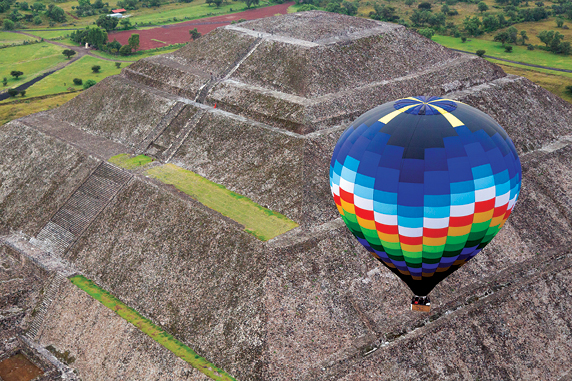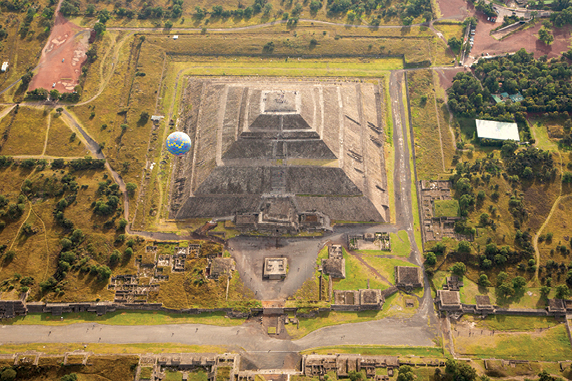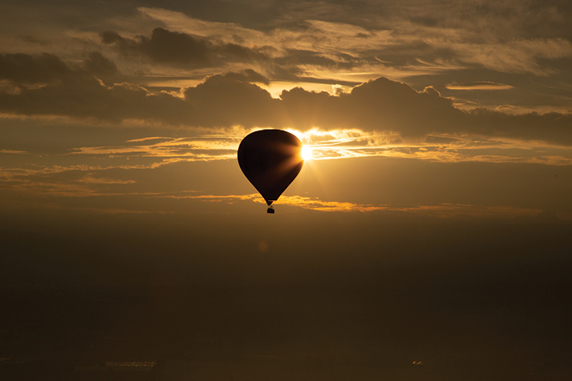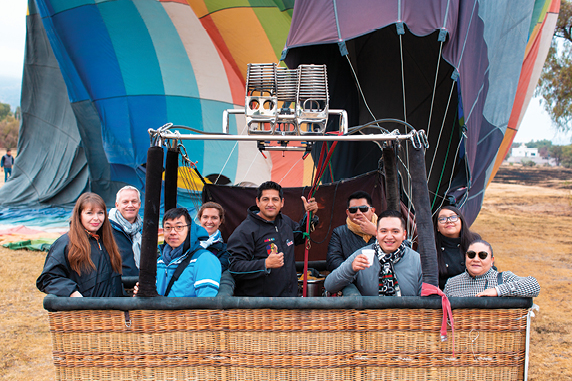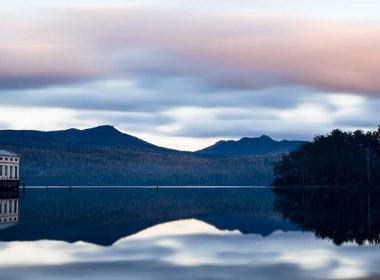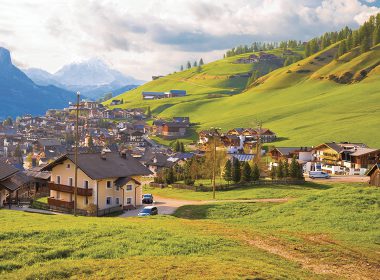Admire the awe-inspiring ancient city of Teotihuacán, near Mexico City, from the dazzling heights of a hot-air balloon.
Centuries after the fall of the most important ancient Mesoamerican city, the Aztecs named it Teotihuacán. This enigmatic name means “birthplace of the gods”. As I float through the dawn air almost half a kilometre above two towering pyramids, it’s easy to see – from this god-like perspective – why the Aztecs were so impressed.
Teotihuacán is a UNESCO World Heritage Site and the most-visited archaeological site in Mexico. Five million tourists explore the excavated ancient city every year, although only a small fraction get to enjoy it from the air.
The stars of the Teotihuacán complex are two pyramids, built in about 200 CE. They are named after the sun and the moon and linked by a wide boulevard: the avenue of the dead. Egypt’s pyramids may enjoy international recognition, but the larger of the Teotihuacán pair – Mexico’s Pyramid of the Sun – is the third-largest in the world.
A dawn balloon ride over these two ancient structures offers a mystical, almost spiritual, way to experience ancient Mesoamerican history. It’s a perspective the Teotihuacanos would never have enjoyed. But since the city’s founding in 100 BCE, its people have managed to build grand structures that are best appreciated from above.
The Flying Pictures tour company pioneered scenic balloon flights over Teotihuacán, although the company began in the film industry. In fact, the company still provides aerial videography services to Hollywood – most notably for the iconic opening scene of James Bond’s Spectre, filmed in Mexico City. Thankfully, there will be no explosions or dramatic chases during today’s ride.
“We’re not breaking no speed records,” quips our balloon pilot, Odin, with the silent dawn air barely stirring. As our balloon climbs higher, Odin offers a history lesson.
“When the Aztecs arrived, this site was already abandoned. No one really knows why. Aliens? Disease? Drought?”
The most likely theory is that drought and food shortages, occasioned by a volcanic eruption in El Salvador in the mid-500s, precipitated unrest and the civilisation’s self-destruction.
Odin quips to nervous passengers before take-off that this is only his second flight. It’s a well-rehearsed gag: he has been flying in this area for 25 years. But even with his wealth of experience, Odin remains no closer to any answers surrounding the secrets of Teotihuacán.
“It really is a mysterious place,” he says.
Odin deftly navigates our balloon, the Mercurio, between about 30 others in the milky morning sky. These balloons can safely reach an altitude of 3,000 metres, although Joaquín tops out our journey at 600.
“If we go too high, we find ourselves on the flight path to Mexico City Airport,” he laughs.
Just hours ago I was on that flight path in a transcontinental plane. Now I float serenely, enjoying an upgrade with expansive leg room and a 360-degree live entertainment package: the stunning Teotihuacán.
The Mercurio breaks from the pack and we float towards the sun pyramid. The balloon’s shadow rests on the structure’s giant sloping stone flank. There might be another 400-odd people in the air this morning, but for a moment I feel alone thanks to Odin’s crafty manouevre. As if for effect, a cold breeze ripples through the balloon, sending its occupants shivering before Odin pulls the gas trigger and the balloon’s flame adds warmth and altitude.
With the sun fully risen, it is soon time to return to earth. Ninety minutes after setting off we bump gently into the dirt of an empty field not far from the ancient city. Mere seconds after the balloon basket touches land, Odin has a bottle of champagne in hand.
“This is tradition,” he offers as justification for plying us with alcohol before 9am. “During one of the first balloon journeys in rural France in the 1800s, farmers thought the balloon was a dragon, so they attacked it with pitchforks. Thankfully, the pilots had brought a bottle of champagne with them, and they gave it up as a peace offering.”
A sip of sparkling might be de rigeur for scenic balloon flights, but I can’t help thinking alcohol would not have saved us had we landed during the height of this ancient city’s prominence, when ritual sacrifices were commonplace. Toasting to our journey, Odin reads my mind. “Although perhaps here it should be tequila, no?”
Checklist
Flying Pictures offers a sunrise hot air balloon experience above Teotihuacán, including return transfers and a post-flight champagne breakfast, from MXN $2,599 (AU$200).
Teotihuacán is a one-hour drive from the centre of Mexico City.
Photography: Pablo Byrne/Flying Pictures


